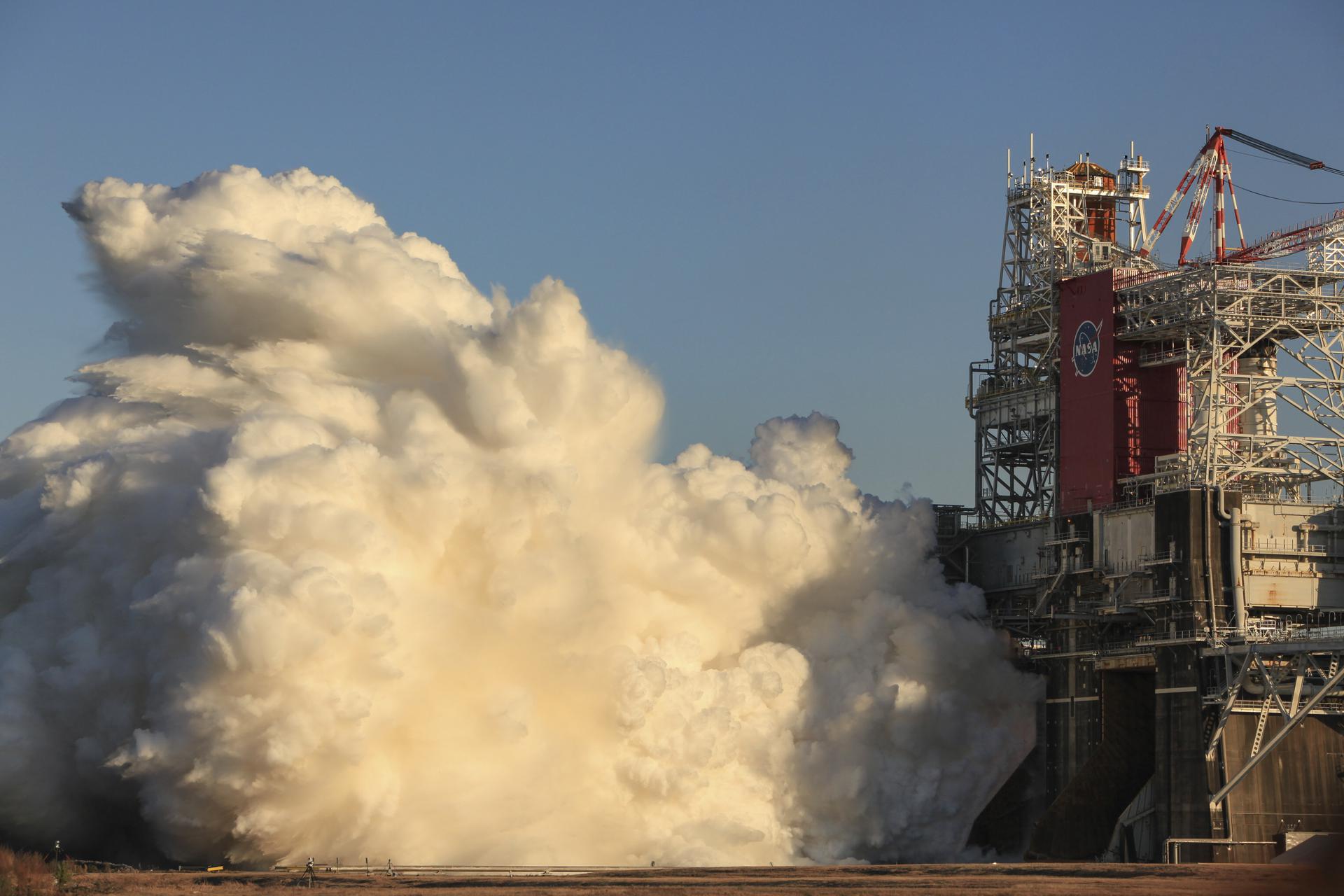
For SpaceUpClose.com & RocketSTEM
CAPE CANAVERAL, FL – NASA announced today the agency plans to perform a second Green Run hot fire test as soon as late February of all four engines on the Space Launch System (SLS) mega Moon rocket’s core stage – as a direct result of the premature end to the initial hot fire test conducted on Jan. 16 at NASA’s Stennis Space Center in Mississippi after barely 1 minute of engines firing out of 8 minutes scheduled.
“NASA plans to conduct a second Green Run hot fire test as early as the fourth week in February with the Space Launch System (SLS) rocket’s core stage that will launch the Artemis I mission to the Moon,” NASA confirmed in a statement Friday, Jan. 29.
“The Green Run is a comprehensive assessment of the rocket’s core stage prior to launching Artemis missions.”
A successful completion to the long awaited and absolutely critical Green Run hot fire test of all RS-25 four core stage engines simultaneously firing is essential for NASA to move forward with confidence with Project Artemis missions aimed at returning US astronauts to the moon and landing the first woman and next man as soon as late 2024.
.@NASA will proceed with a second Green Run hot fire of the #Artemis I @NASA_SLS core stage at @NASAStennis in February. The second hot fire test will build off insights from the first test to certify the rocket stage is ready for future Artemis missions: https://t.co/530jZvMIne
— NASA Artemis (@NASAArtemis) January 29, 2021
The launch of Artemis 1 will now almost certainly slip into 2022 vs. the hoped for target date of NET late November 2021 because the core stage shipment to the launch site at NASA’s Kennedy Space Center in Florida will now ship at least 1 month later than previously planned.
However NASA did not specify any Artemis 1 launch target date in their statement today Jan. 29.
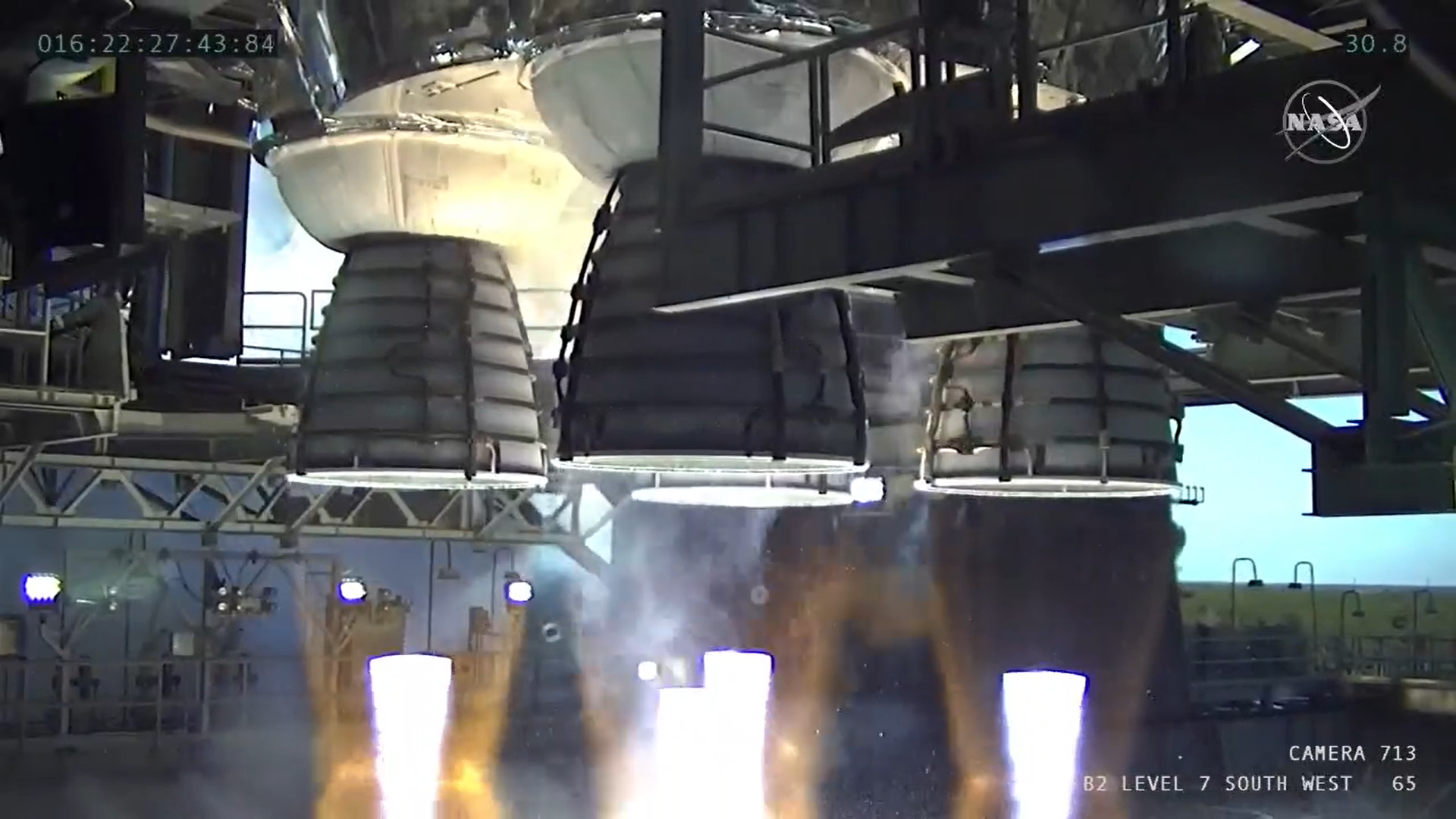
The 2nd Green Run hot fire test is being conducted because the first test conducted at 5:27 p.m. ET on Jan. 16 in the B-2 test stand at NASA’s Stennis Space Center only lasted about 67 seconds vs. the planned full duration test run of about eight minutes or approximately 485 seconds – the time it takes to achieve orbit.
NASA and prime contractor Boeing officials determined that the premature engine shutdown was “triggered by test parameters that were intentionally conservative to ensure the safety of the core stage during the test.”

The Green Run hot fire test was planned to run full duration and simultaneously fire the four RS-25 engines on the SLS core stage for about 8 minutes or approximately 485 seconds on the B-2 test stand at Stennis and generate about 1.6 million pounds of thrust – fueled by cryogenic, or supercold, liquid oxygen (LOX) and liquid hydrogen (LH2) propellant fed into the fuel tanks from six propellant barges.
Prior to the first test NASA and Boeing officials had said they needed at least for the test to run a minimum of about 250 seconds to obtain sufficient data to proceed ahead with the Artemis 1 mission.
Inspections of the core stage after the Jan 16 hot fire test reveled it to be “in excellent condition” with no significant repairs required
“While the first hot fire test marked a major milestone for the program with the firing of all four RS-25 engines together for the first time for about a minute, it ended earlier than planned,” NASA officials said.
“After evaluating data from the first hot fire and the prior seven Green Run tests, NASA and core stage lead contractor Boeing determined that a second, longer hot fire test should be conducted and would pose minimal risk to the Artemis I core stage while providing valuable data to help certify the core stage for flight.”
“Inspections showed the core stage hardware, including its engines, and the B-2 test stand are in excellent condition after the first hot fire test, and no major repairs are needed to prepare for a second hot fire test at NASA’s Stennis Space Center in Bay St. Louis, Mississippi.”
The hot fire test could happen about 1 month from now and as soon as the last week in February.

More from NASA:
All SLS rockets use the same core stage design, so a second Green Run hot fire will reduce risk for not only Artemis I, but also for all future SLS missions. The Green Run series of tests is designed to certify the core stage design and verify that the new stage is ready for flight. The hot fire test is the final Green Run test and will provide valuable data that minimizes risk for American deep space exploration missions for years to come.
The Green Run team scrutinized data from the first hot fire test and determined that a second hot fire lasting approximately at least four minutes would provide significant data to help verify the core stage is ready for flight. A second hot fire test is planned for about eight minutes to simulate the time amount of time it will take to send the rocket to space following launch. The Green Run wet dress rehearsal and first hot fire test completed several operations:
- transitioning to the automated launch sequence operated by the core stage flight computer and Green Run software,
- completing the terminal countdown sequence that is like the launch countdown
- pressuring the tanks and delivering propellant to the engines and demonstrating performance of the core stage’s main propulsion system,
- firing the engines at 109 percent power level, and
- operating the thrust vector control system that steers the engines.
Conducting a second hot fire test will allow the team to repeat operations from the first hot fire test and obtain data on how the core stage and the engines perform over a longer period that simulates more activities during the rocket’s launch and ascent. To prepare for the second hot fire test, the team is continuing to analyze data from the first test, drying and refurbishing the engines, and making minor thermal protection system repairs. They are also updating conservative control logic parameters that resulted in the flight computer ending the first hot fire test earlier than planned. The team has already repaired the faulty electrical harness which resulted in a notification of a Major Component Failure on Engine 4. This instrumentation issue did not affect the engine’s performance and did not contribute to ending the first test early.
After the second hot fire test, it will take about a month to refurbish the core stage and its engines. Then, the Pegasus barge will transport the core stage to NASA’s Kennedy Space Center in Florida where it will be assembled with the other parts of the SLS rocket and the Orion spacecraft being prepared for the Artemis I launch later this year.
……
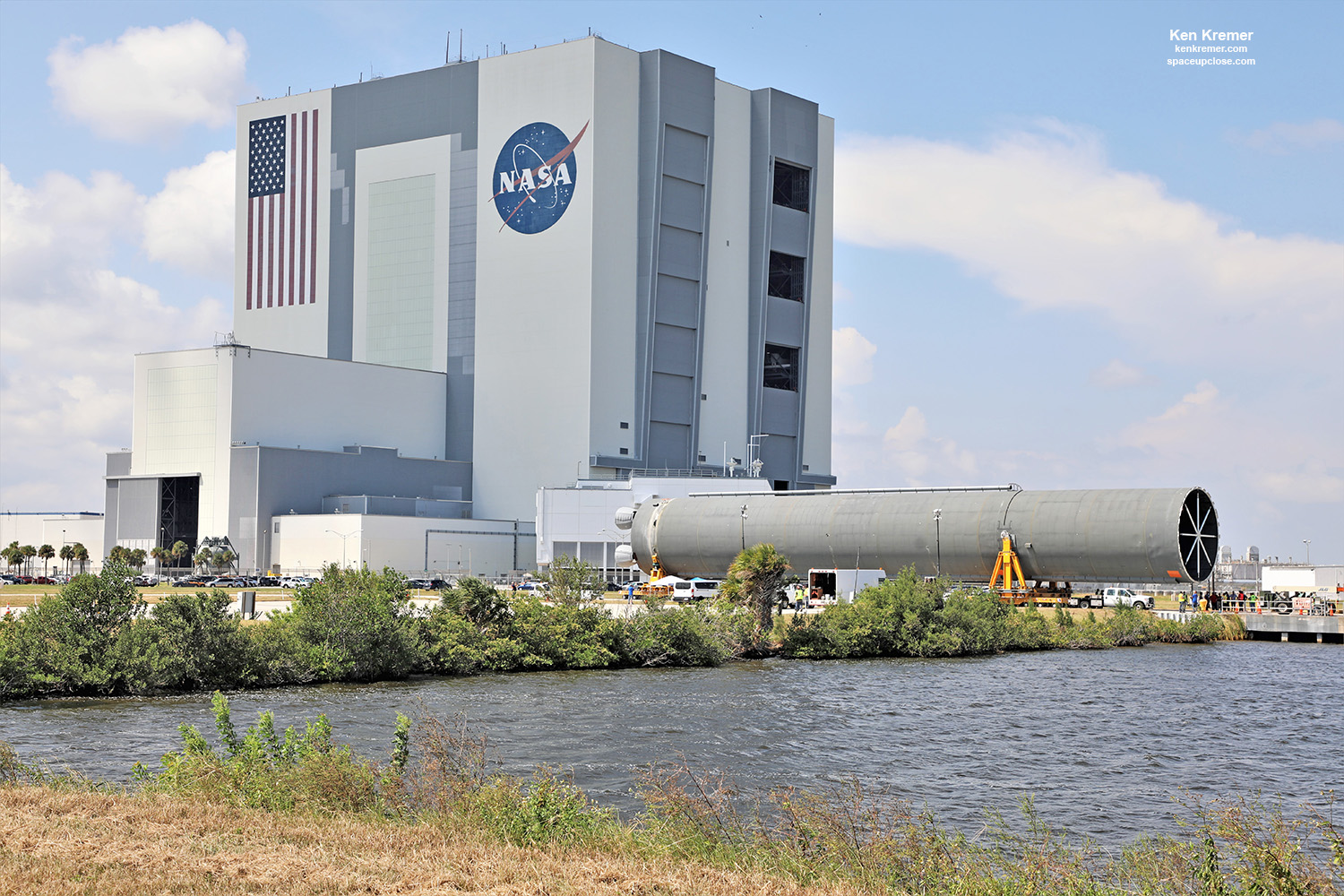
All four Aerojet Rocketdyne RS-25 core stage engines – recycled from the space shuttle era – did successfully ignite as planned at 120-millisecond intervals at 5:27 p.m. ET (2227 GMT) on the B-2 Test Stand at Stennis Space Center and fired for 67 seconds.
Thus the test was a milestone achievement and marks a major step forward for SLS since NASA did collect a vast quantity of very helpful data.
In fact 1st test marked the first time that all four engines ignited simultaneously for the Boeing-built core stage.
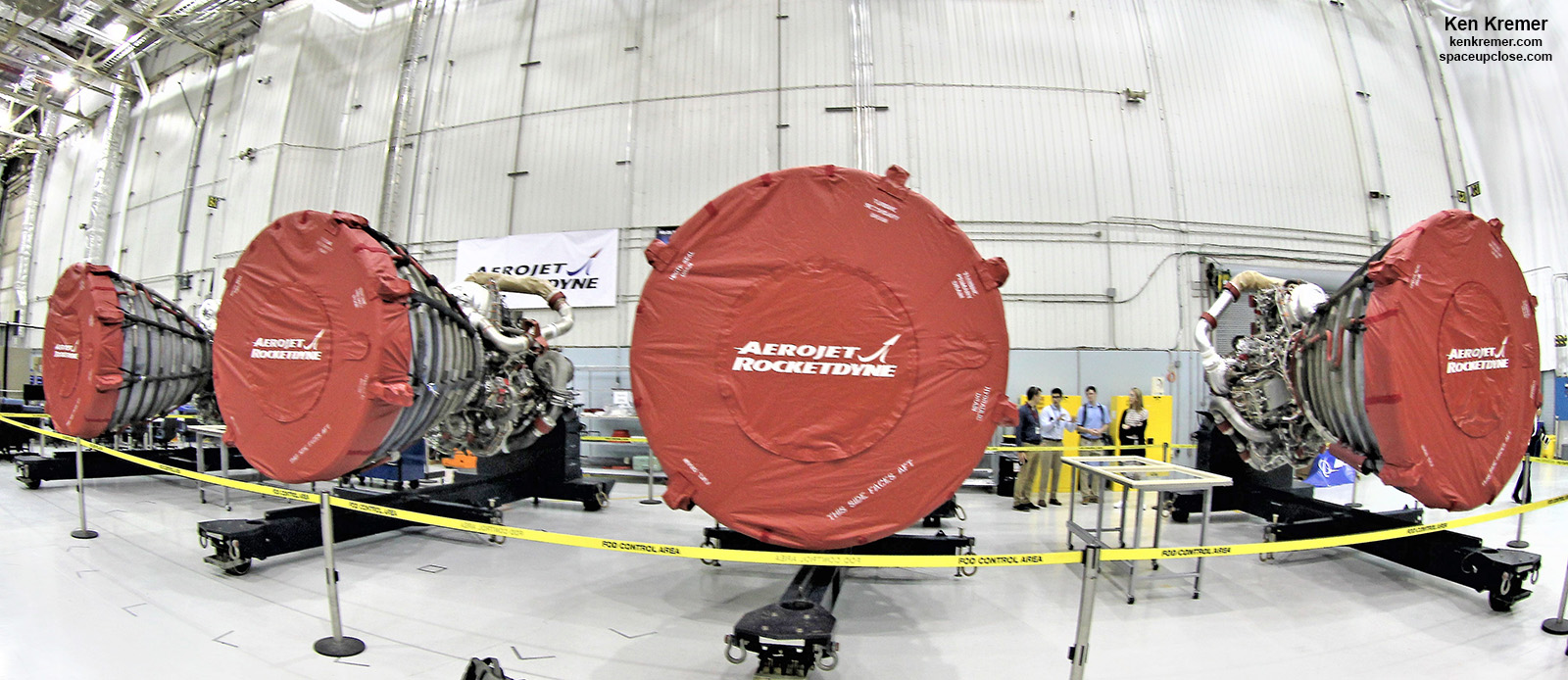
The hot fire lasted only a little more than 1 minute and was far short of the full duration Green Run test NASA and prime contractor Boeing had sought in order to clear the core stage for refurbishment and then shipment by the Pegasus barge for arrival at NASA’s Kennedy Space Center (KSC) launch site on February 25.
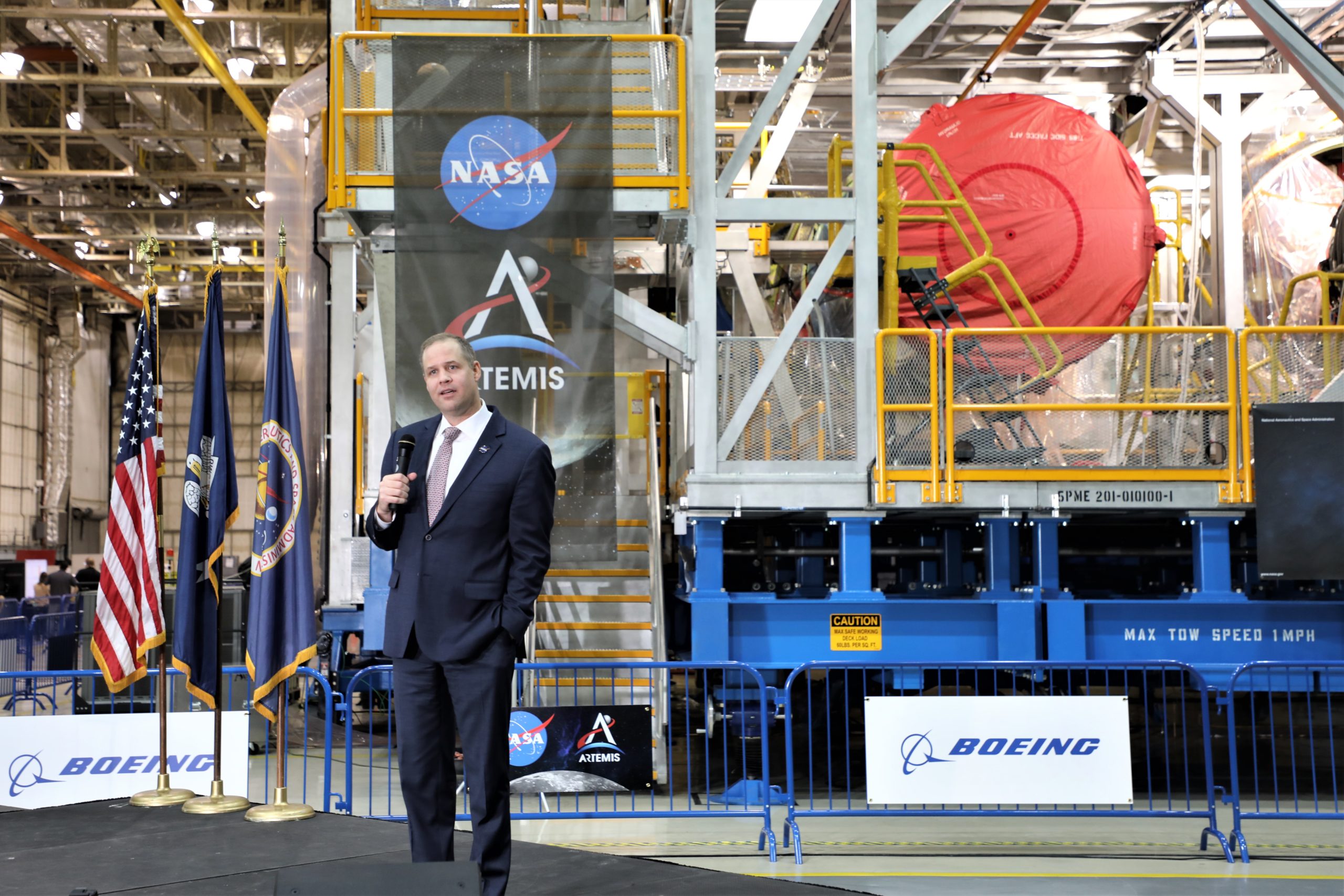
“Saturday’s test was an important step forward to ensure that the core stage of the SLS rocket is ready for the Artemis I mission, and to carry crew on future missions,” said then NASA Administrator Jim Bridenstine, who attended the test in a post test media briefing.
“Although the engines did not fire for the full duration, the team successfully worked through the countdown, ignited the engines, and gained valuable data to inform our path forward.”
https://twitter.com/NASA/status/1350623897520111619
https://twitter.com/NASA/status/1350573543730372615
The full duration firing of eight minutes was planned because its the same amount of time it will take to send the SLS rocket to space following launch from KSC.
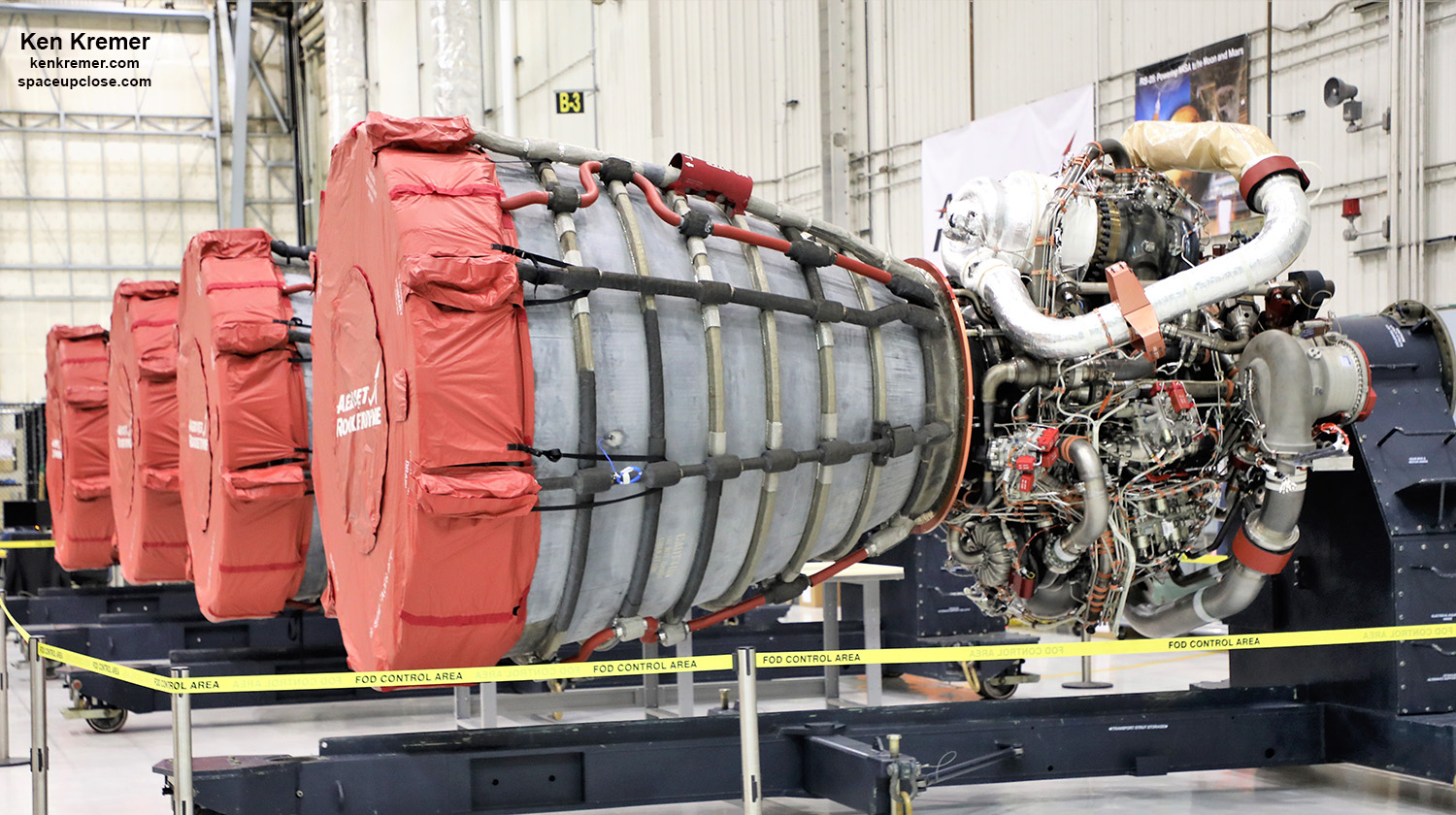
Officials said they needed for the test to run at least about 250 seconds to obtain sufficient data to proceed ahead – at the pretest briefing.
This first SLS core stage is destined to launch the Artemis I mission to the Moon.
NASA had been targeting to launch Artemis 1 by late 2021 – if all had gone well with the Jan. 16 hot fire test.
The first hot fire was to be the final test in the Green Run series of eight major tests that began about a year ago.
“For the test, the 212-foot core stage generated 1.6 million pounds of thrust, while anchored in the B-2 Test Stand at NASA’s Stennis Space Center near Bay St. Louis, Mississippi. The hot fire test included loading 733,000 pounds of liquid oxygen and liquid hydrogen – mirroring the launch countdown procedure – and igniting the engines,” NASA reported.
Watch our live and complete ‘Stay Curious’ Dec 14 and Dec. 30 , 2020 show on many space topics including Artemis and human spaceflight.
https://www.facebook.com/175507880819/videos/226784775573274
https://www.facebook.com/175507880819/videos/775199953071117
Video Caption: Return and Resurgence of US Human Space Flight: Learn about what’s new at the Cape with huge increase in launches including SpaceX Crew & Cargo Dragon and ULA Atlas & Delta IV Heavy launches and Holidays in Space as Space Journalists Dr. Ken Kremer and Jean Wright serve as co-hosts on ‘Stay Curious’ on the Dec. 14 edition hosted by American Space Museum and update you on the latest news from the Space Coast…all to bridge the space between us. Credit: Stay Curious/American Space Museum
Watch Ken’s continuing reports about Artemis and NASA missions, SpaceX, Starlink, Commercial Crew and Starliner and Crew Dragon and onsite for live reporting of upcoming and recent SpaceX and ULA launches including Crew 1 & 2, Demo-2, ISS, X-37B, Solar Orbiter, Mars 2020 Perseverance and Curiosity rovers, NRO spysats and national security missions and more at the Kennedy Space Center and Cape Canaveral Space Force Station.
Stay tuned here for Ken’s continuing Earth and Planetary science and human spaceflight news: www.kenkremer.com –www.spaceupclose.com – twitter @ken_kremer – email: ken at kenkremer.com
Dr. Kremer is a research scientist and journalist based in the KSC area, active in outreach and interviewed regularly on TV and radio about space topics.
………….
Ken’s photos are for sale and he is available for lectures and outreach events
Please consider supporting Ken’s work by donating at Patreon:
https://www.patreon.com/kenkremer
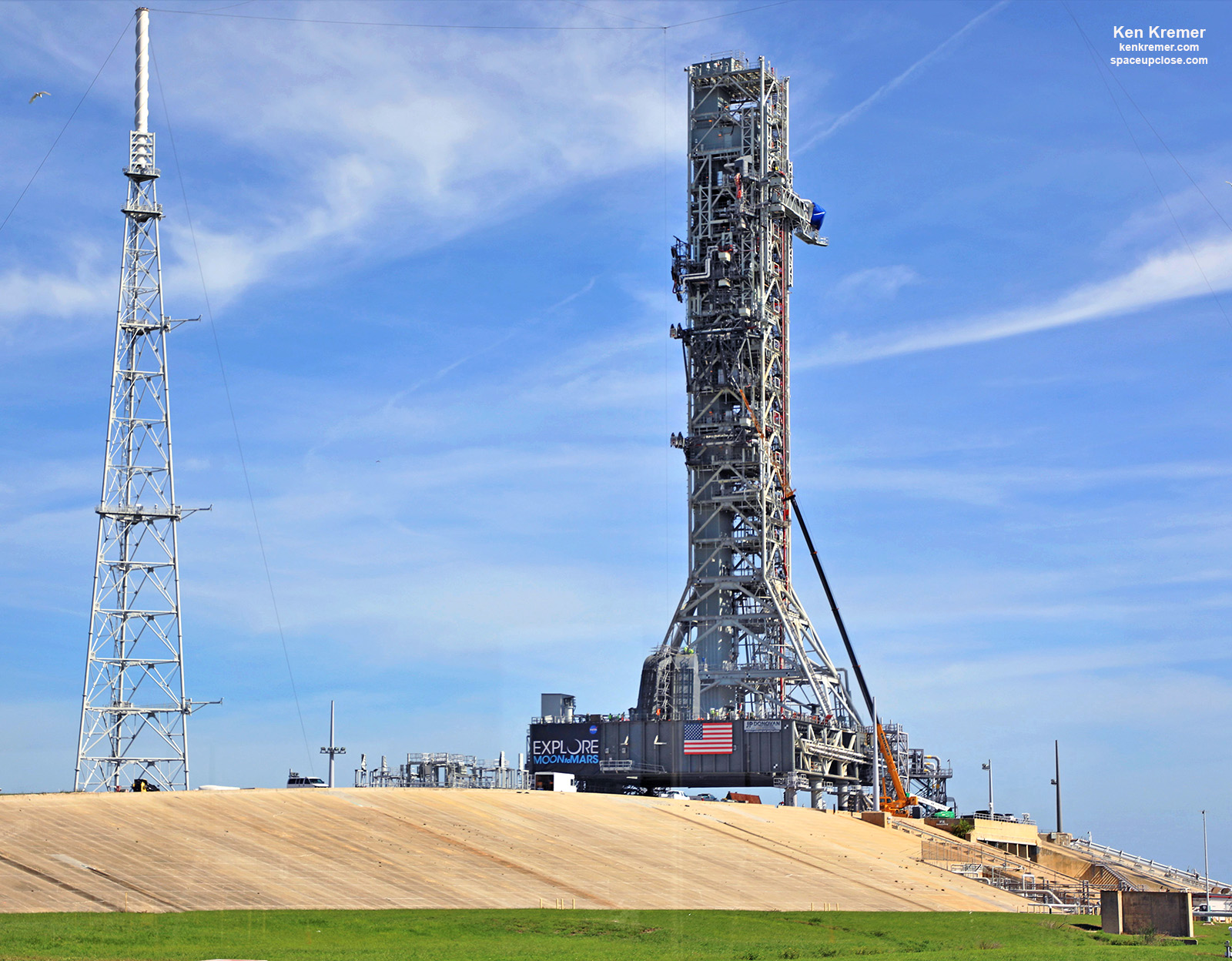
x



